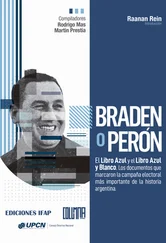The KGB now set up two small detachments of SpetsNaz (special purpose) forces, drawn from the force later known as the Alfa group. This was originally set up by Andropov in July 1974 to deal with terrorism and the release of hostages, taking the British SAS among others as its model. Its members were all officers, selected for their fitness and intelligence.
The first detachment of forty men was code-named Zenit . It was sent to Kabul under the command of Colonel Grigori Boyarinov, who had fought in the Second World War and since 1961 had lectured on low-intensity warfare at the KGB Academy. At first Zenit was housed in the school of the Soviet Embassy in Kabul. Its immediate task was to protect the embassy itself and the senior members of the Soviet community. At Amin’s request, the group also provided training in counterterrorism for its Afghan opposite numbers.
Boyarinov’s group returned to Moscow in September. But it was replaced by a similar group, known as Zenit-2 , under Colonel Polyakov. Polyakov and his officers systematically reconnoitred and mapped the main Afghan administrative and military buildings in Kabul: invaluable intelligence when the time came for the forcible takeover of Kabul in December.
In June Ustinov sent an air assault battalion to protect Soviet transport aircraft and their crews based in Bagram, and if necessary to cover the evacuation of Soviet advisers in an emergency. The troops were to travel as ‘technical advisers’ under the command of Colonel Vasili Lomakin, and their officers were to wear sergeants’ insignia of rank to disguise the provenance and structure of the unit. The paratroopers flew to Bagram early in July. 30The movement was picked up by the Americans, who concluded that the soldiers were indeed intended to protect Bagram and that the Russians had no intention of committing them to combat elsewhere in Afghanistan. 31
Thus by the late summer of 1979 several of the military units that were to play a significant role in the first days of the Soviet intervention in Afghanistan were already in place. The denouement was now to be driven forward at ever greater speed by dramatic political events in Kabul itself. Step by step, with great reluctance, strongly suspecting that it would be a mistake, the Russians slithered towards a military intervention because they could not think of a better alternative.
– THREE –
The Decision to Intervene
Now there began a period of plotting and counterplotting. Throughout the summer and autumn Taraki and Amin pursued their separate and contradictory intrigues, which ended in mutual betrayal and tragedy. The Soviet role in all this is still shrouded in ambiguity, and even those who were involved disagree about who was responsible for what. But whatever the truth, Soviet agencies were by now deeply involved in the domestic politics of Afghanistan, which they never fully understood and were never able effectively to shape to their own ends. 1
As the domestic situation worsened throughout Afghanistan, and violent resistance to the Communist regime continued to spread, the confrontation within the ruling Khalq faction began to turn nasty. Amin gathered ever more power to himself. By the beginning of the summer, he held the key positions in the party and the state. He was a member of the Politburo and a secretary of the Central Committee. He was Prime Minister and Deputy Chairman of the Supreme Council of National Defence. He was putting his relatives and trusties into key positions in the army and the security organs. He had manoeuvred his son-in-law Colonel Yakub into the post of Chief of the General Staff. And he was doing all he could to undermine the position of his nominal superior, President Taraki, openly accusing him in the Politburo of dereliction of duty.
On 28 July Amin demoted several members of the cabinet whom he regarded as obstacles to his ambition, including the Minister of Defence, Colonel Watanjar, and the Minister of Internal Affairs, Major Mazduryar. He took over the Defence Ministry himself, and began to post officers and units which he distrusted away from the capital.
A group—Amin later christened it the ‘Gang of Four’—now began to form in opposition to Amin. It consisted of Watanjar, Mazduryar, the previous head of the security service, Asadulla Sarwari, and the Minister of Communications, Gulabzoi. All were former military officers who had been involved in the coups against the King in 1973 and against Daud in 1978. They appealed to Taraki for support, but it was not forthcoming. Amin complained to Taraki about them, accusing them of spreading false rumours about him and trying to discredit him with foreigners. The head of the security police AGSA, Ahmad Akbari, who was also Amin’s cousin, told him at the end of August that Taraki was preparing a terrorist act against him.
It was at this point, on 1 September, that the KGB submitted a memorandum to the Central Committee, with some thoughts on what might be done. The Amin–Taraki government, the analysts said, was losing its authority. The Afghan people were becoming increasingly hostile to the Soviet Union. Taraki and Amin were ignoring advice from Soviet representatives to broaden the political and social base of the regime. They still believed that their domestic problems could be solved by military force and the massive use of terror. Amin was the chief driving force behind this policy, so a way should be found of removing him from power. This seems to have been the first time that the idea of removing Amin was formally articulated at the highest levels of the Soviet government.
Taraki, the memorandum continued, should be persuaded to set up a democratic coalition government. The PDPA—including Parchamists currently excluded from office—should retain the leading role. But ‘patriotic’ clergy, representatives of national minorities, and the intelligentsia should also be brought in. People who had been unjustly imprisoned should be released, including representatives of the Parcham faction. Meanwhile an alternative PDPA government should be prepared and held in reserve; Babrak Karmal, who was still in exile, should be brought into the planning process. This was essentially the plan that was implemented in December.
From now on the Politburo’s Committee on Afghanistan—Gromyko, Andropov, Ustinov, and Ponomarev—became the chief policymaking body for Afghan affairs. It met regularly, often with Soviet representatives brought in from Kabul. The pace of decision-making was greatly accelerated. 2Analyses and recommendations prepared by the Foreign Ministry, the KGB, the Ministry of Defence, and the International Department of the Central Committee were put to the Committee, who passed their recommendations on to the Politburo for decision. Needless to say, the arrangements for coordination between departments, like their counterparts in other governments, were fine in theory, but did not work so well in practice. Departments remained at loggerheads, while the careful but sometimes conflicting analyses and recommendations put forward by cautious officials were often ignored or set aside by leaders who had their own ideas.
The KGB had long experience of dealing with Afghanistan, many covert contacts there, and its own ideas of how things should be handled: it was in many ways the lead department. It had invested much of its capital in the Parcham faction, and tended to reflect their views, even though these were a comparatively small proportion of the membership of the PDPA—fifteen hundred out of fifteen thousand.
The rest of the membership was from Khalq. That was also the faction to which most of the Communist officers in the army belonged, men whom Amin had made a special effort to cultivate. 3The result was a growing contradiction between the views of the KGB, who came to favour intervention and the replacement of Amin by their man, the Parcham leader Babrak Karmal, and the views of the Soviet military, who were prepared to live with Amin because they believed that the main thing was to retain the support of the Khalq officers in the army, many of whom had been trained in the Soviet Union and had good professional relations with their Soviet military colleagues. These disagreements were exacerbated by poor personal relations between senior KGB and army officers, and by rivalries between the KGB and the army’s own intelligence organisation, the GRU.
Читать дальше












